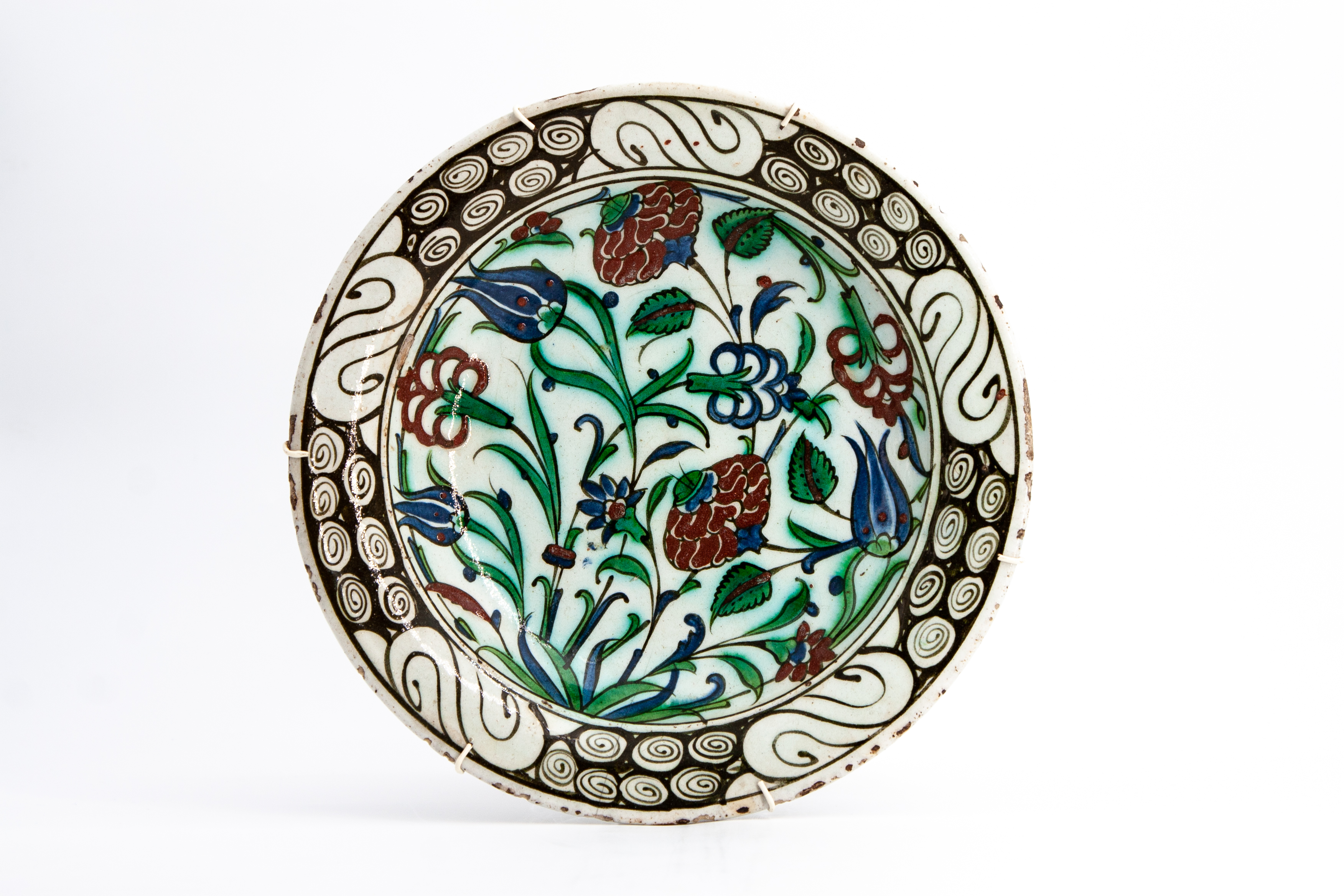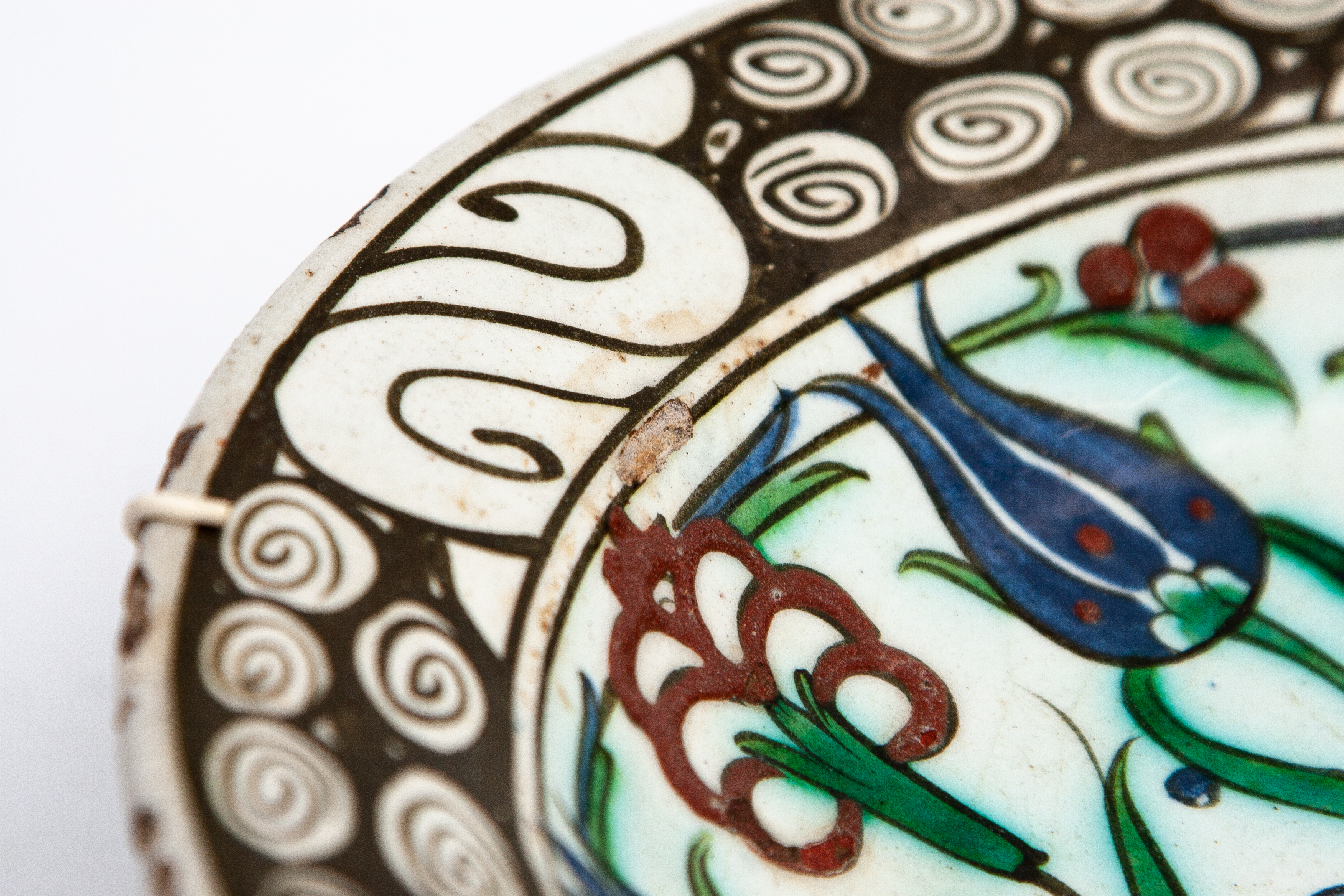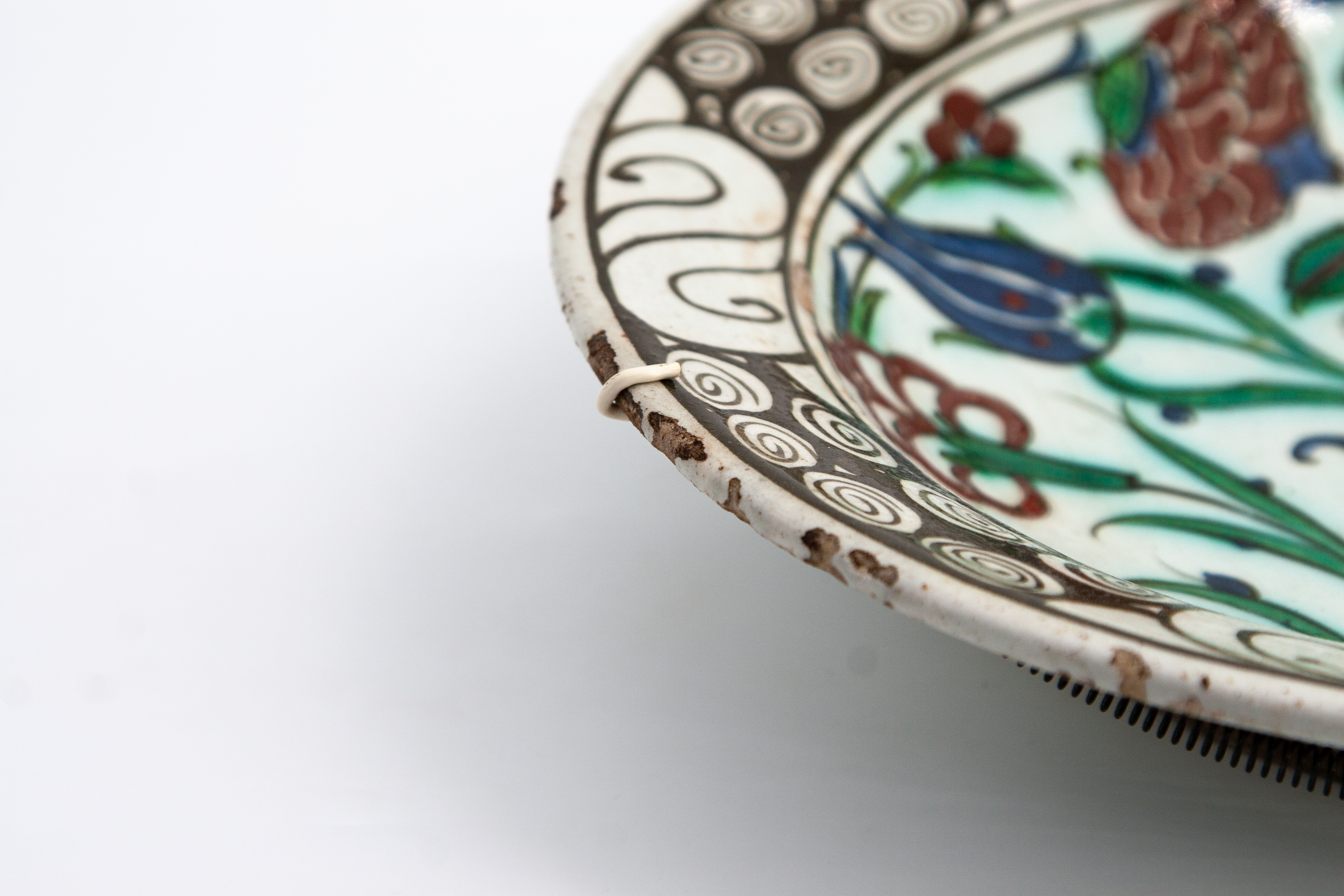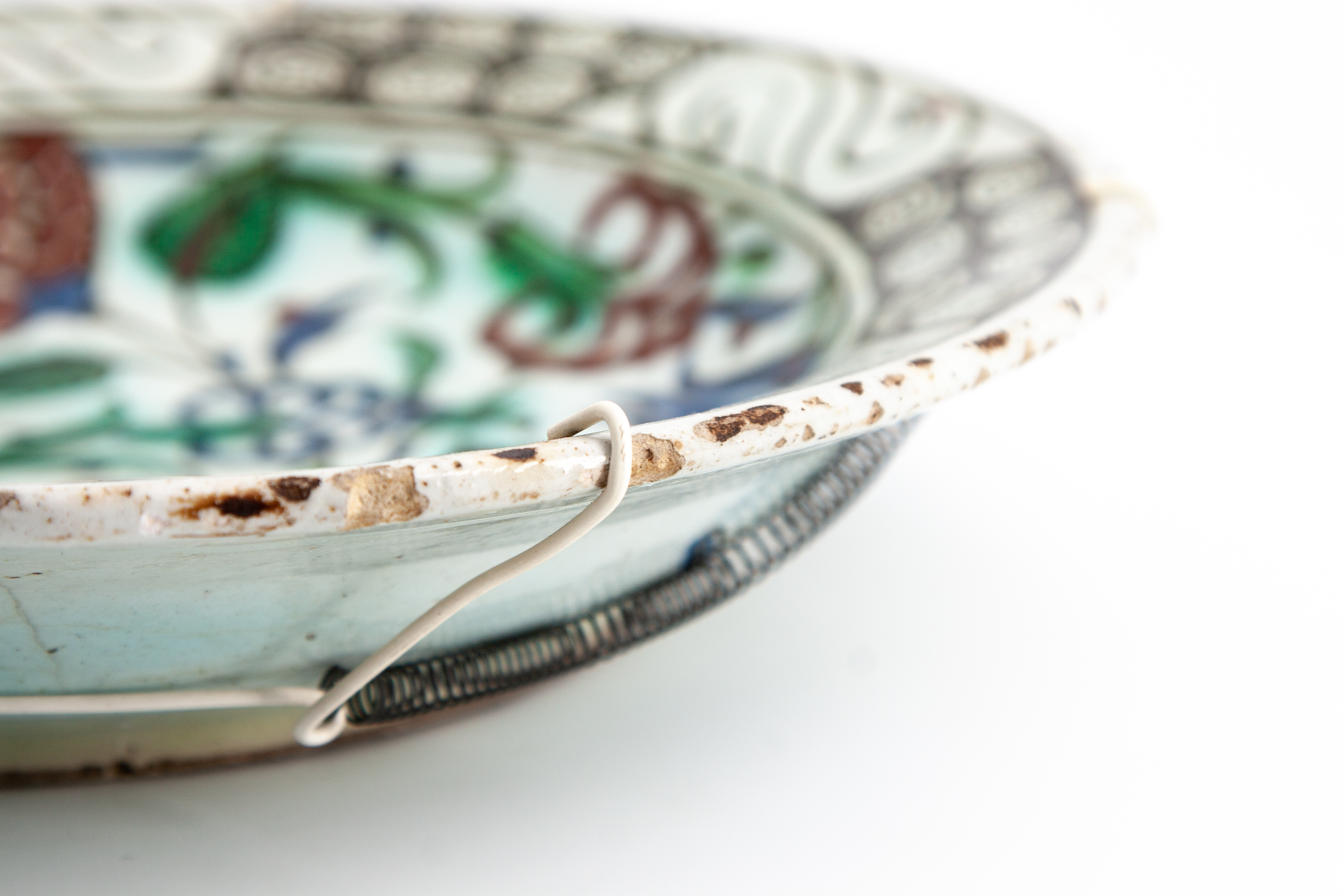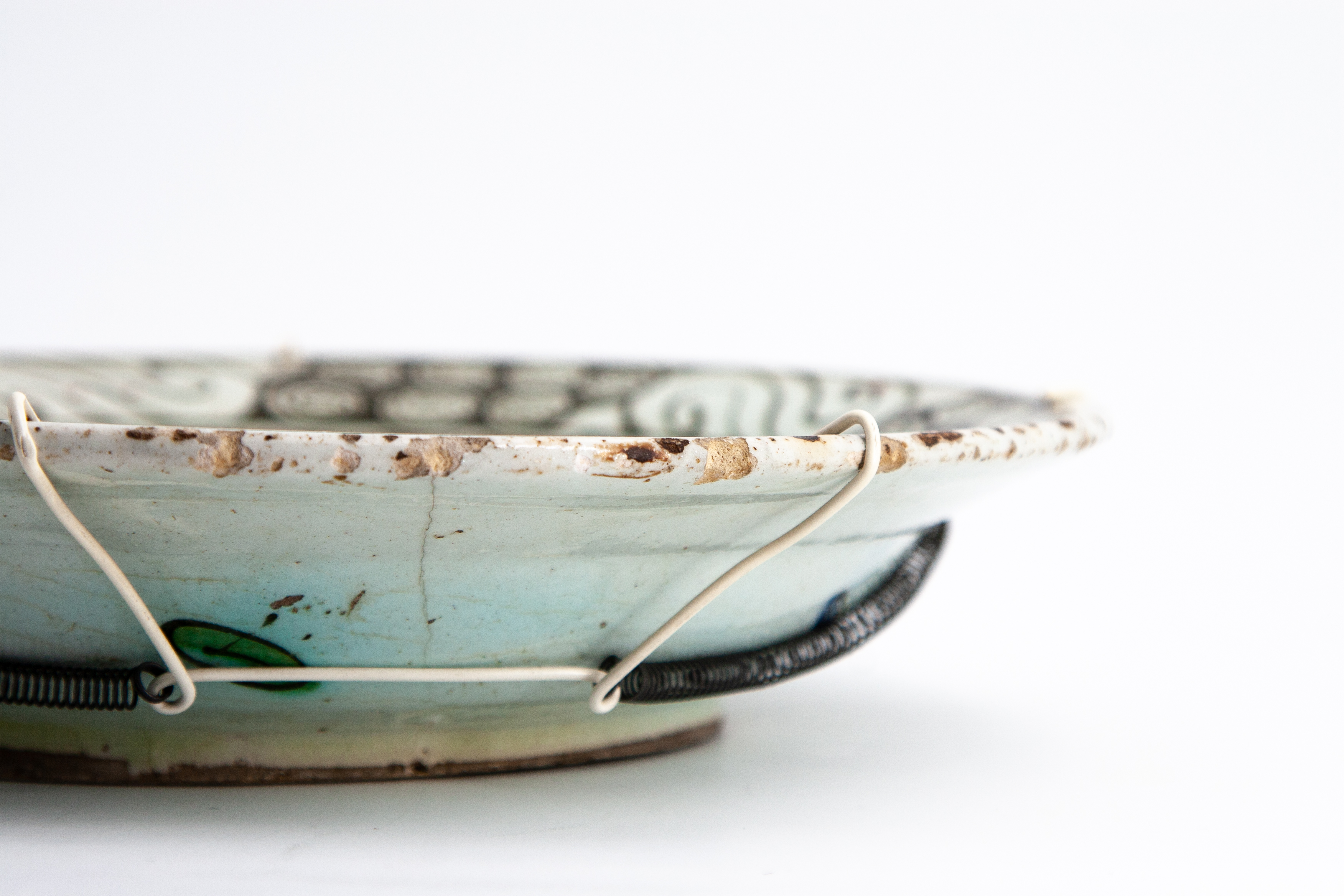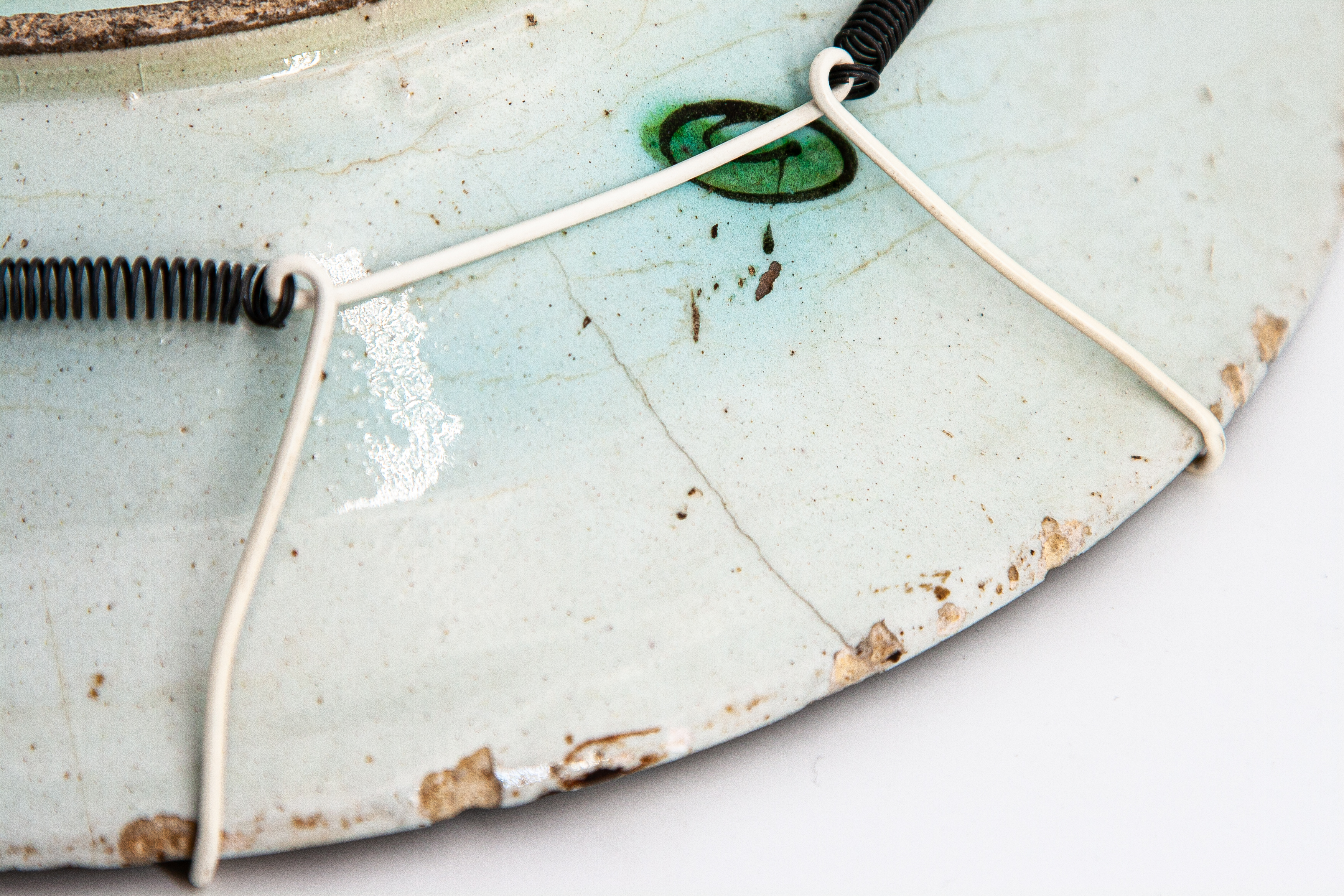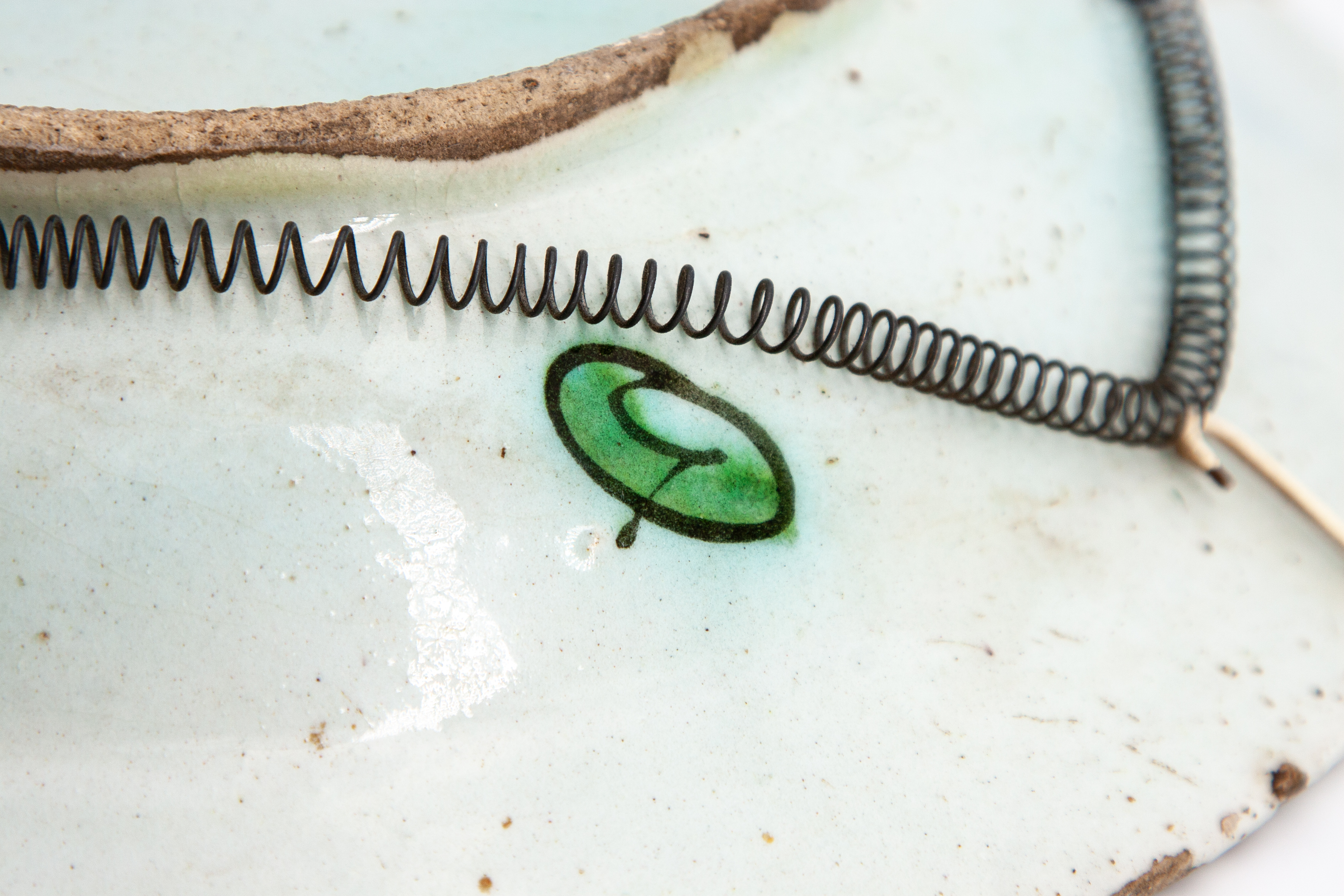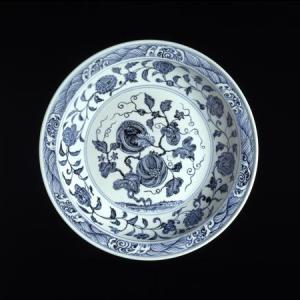Under the direction of Ottoman Sultans, Iznik ceramics blended prestigious Chinese porcelain aesthetics with Ottoman and Islamic ideals to achieve the designs seen on the bowl and border of this dish. Made by the best artists imported from across the Ottoman empire between the 15th-17th centuries, these highly-regarded wares served an important role in creating a shared identity for a culturally diverse population and uniting different factions under one centralized system.
Under the direction of Ottoman Sultans, Iznik ceramics blended prestigious Chinese porcelain aesthetics with Ottoman and Islamic ideals to achieve the designs seen on the bowl and border of this dish. Made by the best artists imported from across the Ottoman empire between the 15th-17th centuries, these highly-regarded wares served an important role in creating a shared identity for a culturally diverse population and uniting different factions under one centralized system.
Essay
The defeat of Byzantium in 1453 set the stage for the formation of the three major 15th-century Islamic empires: the Safavid, Mughal, and Ottoman empires. The Ottoman Empire covered the expanse of what we know today as the Middle East. Among its greatest challenges was unification of the different societies it conquered under one centralized system. Ottoman ceramics were mainly produced in the Iznik-Bursa-Edrine area (modern day northwestern Turkey), a region that was home to the Empire’s major capital cities and centers of production. Iznik ceramics, like the plate discussed here, served an important role in creating a shared identity for a culturally diverse population. Furthermore, they became a highly popular export, solidifying the Empire’s success through its artistic prowess on a global scale.
The empires of Asia had constant and dynamic relationships with one another and thereby shared artistic influence through global encounters brought about by trade and conquest. Works produced in the great empires of the East, such as in Dynastic China and the Timurid Empire, were long appreciated and desired by their neighbors, near and far. This resulted in ever-growing trade networks that exchanged goods across the globe. In the process of creating a distinct visual language the Ottomans adopted the designs of other regions and put them together to make an artistic language of their own. The Yesil Cami mosque and Yesil Turbe tomb, which can still be visited today in Bursa, are early examples of Iznik pottery as architectural elements that demonstrate pan-Asian design influence.
Iznik ceramics merged together different elements from different cultures as well as different artforms. One significant influence on the production of Iznik ware was Chinese ceramics. Chinese porcelain, blue-and-white porcelain in particular, was considered highly prestigious throughout Europe and Asia. As a result, floral designs and border patterns that are found on the front and back of Iznik wares bear a great deal of similarity with Chinese motifs. The rock-and-wave pattern on the border of this dish was inspired by Chinese prototypes that alluded to the Isle of Immortals in Chinese culture. Compare, for example, this 15th-century Chinese Ming Dynasty dish with a 16th-century Iznik dish. Chrysanthemums and tulips on this dish were not only adopted designs from other cultures, but also featured prominently as popular allegorical subjects in the love poetry of Ottoman poets, as in this Iznik dish at the Metropolitan Museum. Ultimately, this developed into a distinctly Ottoman foliate Saz Style, fully articulated by Shah Quli, a 16th century Persian painter working in the Ottoman court.
Trade of goods was not the only way through which the Ottoman Empire appropriated Eastern techniques and styles. As the Ottomans expanded their territories, the best craftsmen from conquered territories were sent to work at the royal manufactories in Iznik, indicated for instance by the presence of Persian worksman in the royal workshops in Bursa as early as 1421. Therefore, the production of early Iznik ceramics was often carried out by craftsmen who were usually not native to Iznik but were transferred to the empire’s capital as spoils of war as conquered territories kept expanding eastward. These craftsmen translated their own artistic traditions onto Iznik pottery, resulting in multi-cultural designs.
By the mid-16th century Iznik wares had shifted their color schemes to vivid colors, brought about by technical advances that introduced new brilliant red and green pigments. These were not merely aesthetic additions, but technical feats that demonstrated power through skilled craftsmanship, adding to these objects’ allure. Yet, the peak of Iznik ceramics was short-lived. Coinciding with the decline of the Ottoman Empire itself, by the mid-17th century a gradual decline can be seen in the quality of works that were produced, from less vibrant colors to lesser quality glaze.
Patronage of Iznik ceramics permeated all layers of Ottoman society, including the Sultan Mehmed II, who was a great lover of the arts. The peak of Iznik ceramic production at the turn of the 17th century was a tangible demonstration of the greatness of a distinguished and successful empire. Indeed, the demand for Iznik wares was so immense that a royal decree in 1585 was required in order to force potters to finish royal commissions before meeting the demand of the commercial market. Because of their cost, dishes such as this one were seldom used for eating, and were instead put on display by their owners. Despite the collapse of the kingdom, Iznik ceramics never ceased to be highly collectable objects all over Europe and many parts of Asia. As such, in the 19th century, Iznik ceramics were recognized as one of the great artforms of history and its designs revived by renowned ceramicists including Cantagalli, Samson, and Theodore Deck.
MA
Condition
Excellent, with expected rim glaze chips. Few areas of glaze loss throughout, the most significant being a 1.5 cm loss of glaze to the upper edge of the bowl. 8 cm hairline running from rim to part of the bowl visible on back and front. A previous owner drilled a hole through the back foot for hanging.
For a detailed condition report, please contact us.
Curator’s Note
The wire plate hanger pictured has since been removed.
Exhibited
Provenance
Roseberys London
Private Collection, Greece
Literature
Carswell, John. Iznik Pottery. London: British Museum Press, 2012.
Denny, Walter B. “Blue-and-White Islamic Pottery on Chinese Themes.” Boston Museum Bulletin 72, no. 368 (1974): 76-99.
Denny, Walter B. Iznik: the Artistry of Ottoman Ceramics. London: Thames and Hudson, 2004.
Froom, Aimée E. “The Islamic World, 1400-1600.” In History of Design: Decorative Arts and Material Culture 1400-2000, edited by Pat Kirkham, and Susan Weber, 49-65. New Haven, CT: Yale University Press, 2013.
Pope, John A. “Chinese Influences on Iznik Pottery: A re-examination of an old problem.” In Islamic Art in the Metropolitan Museum of Art, edited by Richard Ettinghausen, 125-139. New York: The Metropolitan Museum of Art, 1972.
Cited Works
The defeat of Byzantium in 1453 set the stage for the formation of the three major 15th-century Islamic empires: the Safavid, Mughal, and Ottoman empires. The Ottoman Empire covered the expanse of what we know today as the Middle East. Among its greatest challenges was unification of the different societies it conquered under one centralized system. Ottoman ceramics were mainly produced in the Iznik-Bursa-Edrine area (modern day northwestern Turkey), a region that was home to the Empire’s major capital cities and centers of production. Iznik ceramics, like the plate discussed here, served an important role in creating a shared identity for a culturally diverse population. Furthermore, they became a highly popular export, solidifying the Empire’s success through its artistic prowess on a global scale.
The empires of Asia had constant and dynamic relationships with one another and thereby shared artistic influence through global encounters brought about by trade and conquest. Works produced in the great empires of the East, such as in Dynastic China and the Timurid Empire, were long appreciated and desired by their neighbors, near and far. This resulted in ever-growing trade networks that exchanged goods across the globe. In the process of creating a distinct visual language the Ottomans adopted the designs of other regions and put them together to make an artistic language of their own. The Yesil Cami mosque and Yesil Turbe tomb, which can still be visited today in Bursa, are early examples of Iznik pottery as architectural elements that demonstrate pan-Asian design influence.
Iznik ceramics merged together different elements from different cultures as well as different artforms. One significant influence on the production of Iznik ware was Chinese ceramics. Chinese porcelain, blue-and-white porcelain in particular, was considered highly prestigious throughout Europe and Asia. As a result, floral designs and border patterns that are found on the front and back of Iznik wares bear a great deal of similarity with Chinese motifs. The rock-and-wave pattern on the border of this dish was inspired by Chinese prototypes that alluded to the Isle of Immortals in Chinese culture. Compare, for example, this 15th-century Chinese Ming Dynasty dish with a 16th-century Iznik dish. Chrysanthemums and tulips on this dish were not only adopted designs from other cultures, but also featured prominently as popular allegorical subjects in the love poetry of Ottoman poets, as in this Iznik dish at the Metropolitan Museum. Ultimately, this developed into a distinctly Ottoman foliate Saz Style, fully articulated by Shah Quli, a 16th century Persian painter working in the Ottoman court.
Trade of goods was not the only way through which the Ottoman Empire appropriated Eastern techniques and styles. As the Ottomans expanded their territories, the best craftsmen from conquered territories were sent to work at the royal manufactories in Iznik, indicated for instance by the presence of Persian worksman in the royal workshops in Bursa as early as 1421. Therefore, the production of early Iznik ceramics was often carried out by craftsmen who were usually not native to Iznik but were transferred to the empire’s capital as spoils of war as conquered territories kept expanding eastward. These craftsmen translated their own artistic traditions onto Iznik pottery, resulting in multi-cultural designs.
By the mid-16th century Iznik wares had shifted their color schemes to vivid colors, brought about by technical advances that introduced new brilliant red and green pigments. These were not merely aesthetic additions, but technical feats that demonstrated power through skilled craftsmanship, adding to these objects’ allure. Yet, the peak of Iznik ceramics was short-lived. Coinciding with the decline of the Ottoman Empire itself, by the mid-17th century a gradual decline can be seen in the quality of works that were produced, from less vibrant colors to lesser quality glaze.
Patronage of Iznik ceramics permeated all layers of Ottoman society, including the Sultan Mehmed II, who was a great lover of the arts. The peak of Iznik ceramic production at the turn of the 17th century was a tangible demonstration of the greatness of a distinguished and successful empire. Indeed, the demand for Iznik wares was so immense that a royal decree in 1585 was required in order to force potters to finish royal commissions before meeting the demand of the commercial market. Because of their cost, dishes such as this one were seldom used for eating, and were instead put on display by their owners. Despite the collapse of the kingdom, Iznik ceramics never ceased to be highly collectable objects all over Europe and many parts of Asia. As such, in the 19th century, Iznik ceramics were recognized as one of the great artforms of history and its designs revived by renowned ceramicists including Cantagalli, Samson, and Theodore Deck.
MA
Excellent, with expected rim glaze chips. Few areas of glaze loss throughout, the most significant being a 1.5 cm loss of glaze to the upper edge of the bowl. 8 cm hairline running from rim to part of the bowl visible on back and front. A previous owner drilled a hole through the back foot for hanging.
For a detailed condition report, please contact us.
The wire plate hanger pictured has since been removed.
Roseberys London
Private Collection, Greece
Carswell, John. Iznik Pottery. London: British Museum Press, 2012.
Denny, Walter B. “Blue-and-White Islamic Pottery on Chinese Themes.” Boston Museum Bulletin 72, no. 368 (1974): 76-99.
Denny, Walter B. Iznik: the Artistry of Ottoman Ceramics. London: Thames and Hudson, 2004.
Froom, Aimée E. “The Islamic World, 1400-1600.” In History of Design: Decorative Arts and Material Culture 1400-2000, edited by Pat Kirkham, and Susan Weber, 49-65. New Haven, CT: Yale University Press, 2013.
Pope, John A. “Chinese Influences on Iznik Pottery: A re-examination of an old problem.” In Islamic Art in the Metropolitan Museum of Art, edited by Richard Ettinghausen, 125-139. New York: The Metropolitan Museum of Art, 1972.
This item ships free to the continental US, and globally for a flat-rate fee of $100.
All objects are packed with utmost care by our team of expert fine art shippers. All items are shipped with parcel insurance.
For more information on our shipping policies, please visit our FAQ Page.

